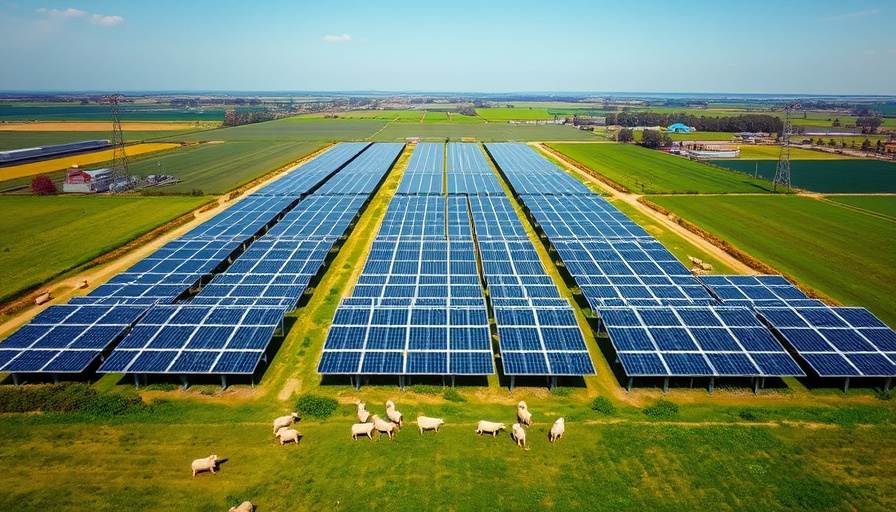
The Rise of Agrivoltaic Farming: A New Model for Sustainability
In Halifax County, Virginia, a groundbreaking agrivoltaic project is reshaping the landscape of modern farming. The Crystal Hill Solar farm, with its 65-megawatt capacity, harmoniously combines renewable energy production with sustainable agriculture, hosting sheep grazing alongside a thriving apiary. This innovative approach not only generates clean energy but creates a unique ecosystem that enhances local agriculture.
A Solar-Powered Oasis for Lambs and Bees
At Crystal Hill Solar, solar panels provide shade and shelter for grazing lambs, which help control vegetation growth, reducing the need for mechanical mowing by over fifty percent. The arrangement supports local farmers and contributes to developing a vibrant sheep economy in southern Virginia. The beauty of this project lies in its dual-purpose design, allowing the cultivation of energy and food on the same land.
The Honey Connection: Benefits Beyond the Farm
Alongside solar energy and sheep farming, the site also features a 10-hive apiary that supports 500,000 bees. Managed in partnership with Siller Pollinator Company, this apiary is expected to produce around 400 pounds of honey annually. The honey will be distributed to local schools and food banks, fostering community connections. Val Newcomb from Urban Grid highlights the importance of these initiatives, saying, "With this project, we’re not merely producing energy, but also enhancing local agriculture and nurturing our community.”
Researching Nature: The Future of Agrivoltaics
The addition of the apiary transforms the site into a research hub where experts will study the effects of pollinator presence on vegetation and overall farm productivity. The data collected will be vital for developing similar agrivoltaic projects in other regions, emphasizing a balance between agriculture and energy production. According to Allison Wickham of Siller Pollinator Company, understanding bee behavior and vegetation interactions will pave the way for smarter land use practices nationwide.
Challenges Ahead: Navigating Federal Policies
While the Crystal Hill Solar project stands as a beacon for agrivoltaics, challenges loom for farmers wishing to replicate this model. Recent freezing of USDA grants, particularly impacting the Rural Energy for America Program (REAP), complicates funding for similar ventures. Farmers pursuing agrivoltaic projects may need to adapt their strategies amidst shifting federal policies, making it even more crucial to advocate for sustainable practices and seek alternative funding models.
What It Means for Homebuyers in Dumfries
As communities like Halifax County lead the way in eco-innovations, homebuyers and investors in Dumfries should take note. Sustainable practices not only benefit the environment but can enhance property value and appeal. Prospective homeowners are increasingly drawn to green living environments that prioritize energy sharing and local agriculture, making potential properties in areas committed to sustainability highly sought after.
In conclusion, initiatives like the Crystal Hill Solar agrivoltaic site exemplify the potential for renewable energy and sustainable agriculture to coexist, highlighting a promising direction for future developments. By supporting such efforts, communities can cultivate an environment where eco-friendly practices flourish, making sustainable living achievable and attractive for all. It is time for homebuyers and investors in Dumfries to consider properties that exemplify these sustainable values and enhance their lifestyle while contributing to the future of our planet.
 Add Row
Add Row  Add
Add 





 Add Row
Add Row  Add
Add 








Write A Comment